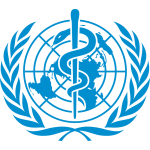Cervical Cancer Elimination Day of Action Date in the current year: November 17, 2025
 Cervical Cancer Elimination Day of Action is an international day of awareness held annually on November 17. It was established by the World Health Organization to commemorate the launch of its global strategy to accelerate the elimination of cervical cancer as a public health problem.
Cervical Cancer Elimination Day of Action is an international day of awareness held annually on November 17. It was established by the World Health Organization to commemorate the launch of its global strategy to accelerate the elimination of cervical cancer as a public health problem.Cervical cancer is a cancer that results from the abnormal growth of cells in the cervix. Nearly 90% of cervical cancers are squamous cell carcinomas, about 10% are adenocarcinomas, and the rest are other types. Cervical cancer is the fourth most common cancer overall, and the third most common and fourth most lethal cancer in women, accounting for about 8% of all new cases and deaths from cancer.
Most cases of cervical cancer are associated with human papillomavirus (HPV). However, not all strains of HPV are associated with cancer, and most women who have had HPV do not develop cervical cancer. Other factors that contribute to the risk of cervical cancer include genetics, smoking, long-term use of oral contraceptives by HPV-infected women, multiple pregnancies, and a weak immune system. Cervical cancer usually develops from a precancerous condition called cervical dysplasia, which is benign in itself but can progress to cancer if left untreated.
The problem with cervical cancer is that it is asymptomatic during the early stages, and its early signs and symptoms (abnormal vaginal bleeding, moderate pain during intercourse, pelvic pain, vaginal discharge) are non-specific. This means that cervical cancer is often diagnosed when it has already metastasized, especially in middle- and low-income countries with poor access to healthcare.
Cervical cancer is diagnosed by a screening test followed by a biopsy to confirm the diagnosis. Medical imaging (ultrasound, CT, MRI) can be used to assess whether the tumor has spread. Treatment usually includes a combination of surgery, radiation, and chemotherapy. Prognosis depends on the stage of the cancer and accessibility of treatment; there is a disparity in five-year survival rates between developed and developing countries.
The good news is that cervical cancer is preventable. Since it is linked to HPV, vaccination against cancer-causing strains of HPV at an early age is highly recommended. Condoms can provide some protection against HPV transmission, but the virus can be transmitted by skin-to-skin contact in areas not covered by the condom. Regular cervical screening (visual inspection and Pap test) is essential for early detection of cervical dysplasia and cervical cancer.
On November 17, 2020, the World Health Organization launched its global strategy to eliminate cervical cancer as a public health problem, which aims to achieve the following 90–70–90 targets by 2030:
- 90% of girls fully vaccinated against HPV by age 15
- 70% of women screened with a high performance test by age 35 and again by age 45
- 90% of women diagnosed with cervical disease receiving treatment
To commemorate the launch of the Strategy and reinforce its goals, WHO designated November 17 as Cervical Cancer Elimination Day of Action. Each year, advocates for the Strategy gather to assess progress and make new commitments toward achieving the 90–70–90 targets. In addition, healthcare organizations and other stakeholders around the world organize local events and activities to raise awareness of cervical cancer and the importance of its prevention and early detection.
- Category
- International Observances
- Tags
- Cervical Cancer Elimination Day of Action, international observances, health awareness days, World Health Organization, cervical cancer